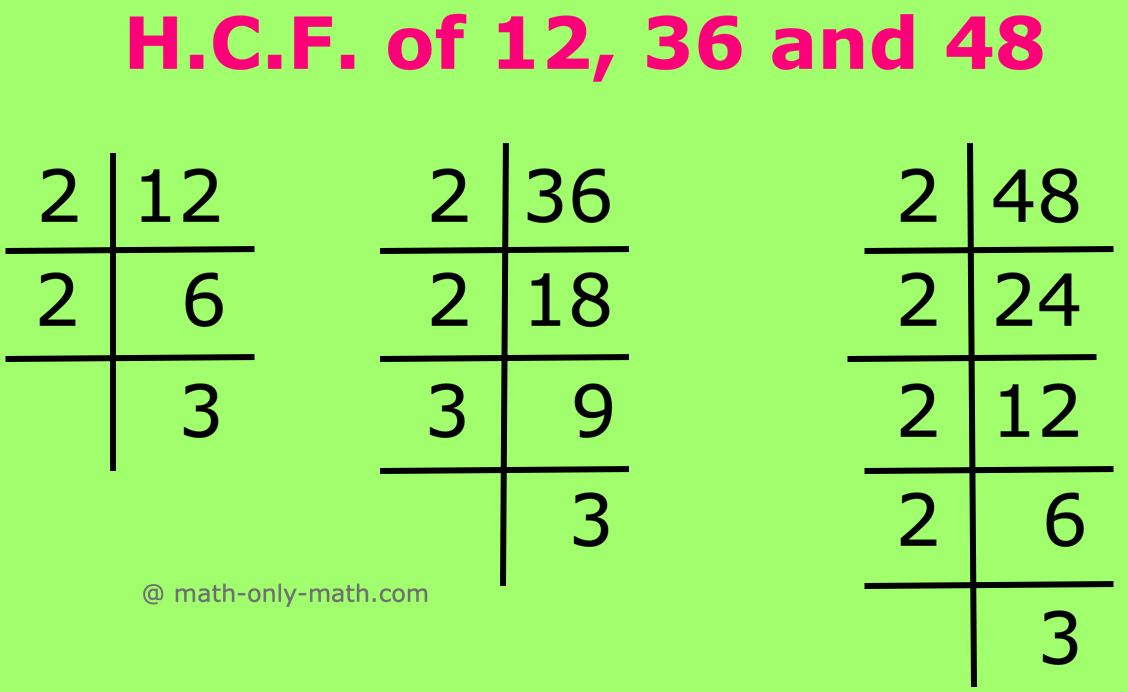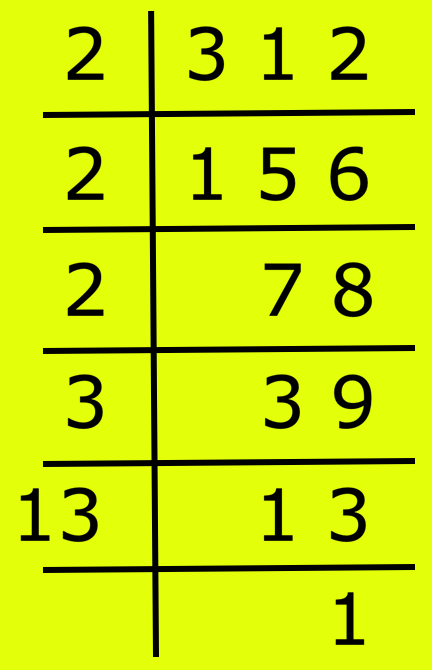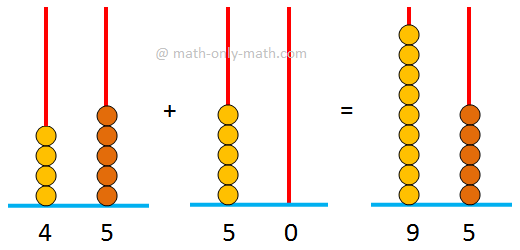Condition for Common Root or Roots of Quadratic Equations
We will discuss how to derive the conditions for common root or roots of quadratic equations that can be two or more.
Condition for one common root:
Let the two quadratic equations are a1x^2 + b1x + c1 = 0 and a2x^2 + b2x + c2 = 0
Now we are going to find the condition that the above quadratic equations may have a common root.
Let α be the common root of the equations a1x^2 + b1x + c1 = 0 and a2x^2 + b2x + c2 = 0. Then,
a1α^2 + b1α + c1 = 0
a2α^2 + b2α + c2 = 0
Now, solving the equations a1α^2 + b1α + c1 = 0, a2α^2 + b2α
+ c2 = 0 by cross-multiplication, we get
α^2/b1c2 - b2c1 = α/c1a2 - c2a1 = 1/a1b2 - a2b1
⇒ α = b1c2 - b2c1/c1a2 - c2a1, (From first two)
Or, α = c1a2 - c2a1/a1b2 - a2 b1, (From 2nd and 3rd)
⇒ b1c2 - b2c1/c1a2 - c2a1 = c1a2 - c2a1/a1b2 - a2b1
⇒ (c1a2 - c2a1)^2 = (b1c2 - b2c1)(a1b2 - a2b1), which is the required condition for one root to be common of two quadratic equations.
The common root is given by α = c1a2 - c2a1/a1b2 - a2b1 or, α = b1c2 - b2c1/c1q2 - c2a1
Note: (i) We can find the common root by making the same coefficient of x^2 of the given equations and then subtracting the two equations.
(ii) We can find the other root or roots by using the relations between roots and coefficients of the given equations
Condition for both roots common:
Let α, β be the common roots of the quadratic equations a1x^2 + b1x + c1 = 0 and a2x^2 + b2x + c2 = 0. Then
α + β = -b1/a1, αβ = c1/a1 and α + β = -b2/a2, αβ = c2/a2
Therefore, -b/a1 = - b2/a2 and c1/a1 = c2/a2
⇒ a1/a2 = b1/b2 and a1/a2 = c1/c2
⇒ a1/a2 = b1/b2 = c1/c2
This is the required condition.
Solved examples to find the conditions for one common root or both common roots of quadratic equations:
1. If the equations x^2 + px + q = 0 and x^2 + px + q = 0 have a common root and p ≠ q, then prove that p + q + 1 = 0.
Solution:
Let α be the common root of x^2 + px + q = 0 and x^2 + px + q = 0.
Then,
α^2 + pα + q = 0 and α^2 + pα + q = 0.
Subtracting second form the first,
α(p - q) + (q - p) = 0
⇒ α(p - q) - (p - q) = 0
⇒ (p - q)(α - 1) = 0
⇒ (α - 1) = 0, [p - q ≠0, since, p ≠ q]
⇒ α = 1
Therefore, from the equation α^2 + pα + q = 0 we get,
1^2 + p(1) + q = 0
⇒ 1 + p + q = 0
⇒ p + q + 1 = 0 Proved
2. Find the value(s) of λ so that the equations x^2 - λx - 21 = 0 and x^2 - 3λx + 35 = 0 may have one common root.
Solution:
Let α be the common root of the given equations, then
α^2 - λα - 21 = 0 and α^2 - 3λα + 35 = 0.
Subtracting second form the first, we get
2λα - 56 = 0
2λα = 56
α = 56/2λ
α = 28/λ
Putting this value of α in α^2 - λα - 21 = 0, we get
(28/λ)^2 - λ * 28/λ - 21 = 0
(28/λ)^2 - 28 - 21 = 0
(28/λ)^2 - 49 = 0
16 - λ^2 = 0
λ^2 = 16
λ = 4, -4
Therefore, the required values of λ are 4, -4.
11 and 12 Grade Math
From Condition for Common Root or Roots of Quadratic Equations to HOME PAGE
Didn't find what you were looking for? Or want to know more information about Math Only Math. Use this Google Search to find what you need.
Recent Articles
-
5th Grade Highest Common Factor | HCF | GCD|Prime Factorization Method
Mar 24, 25 03:40 PM
The highest common factor (H.C.F.) of two or more numbers is the highest or greatest common number or divisor which divides each given number exactly. Hence, it is also called Greatest Common Divisor… -
5th Grade Factors and Multiples | Definitions | Solved Examples | Math
Mar 23, 25 02:39 PM
Here we will discuss how factors and multiples are related to each other in math. A factor of a number is a divisor which divides the dividend exactly. A factor of a number which is a prime number is… -
Adding 2-Digit Numbers | Add Two Two-Digit Numbers without Carrying
Mar 23, 25 12:43 PM
Here we will learn adding 2-digit numbers without regrouping and start working with easy numbers to get acquainted with the addition of two numbers. -
Worksheet on 12 Times Table | Printable Multiplication Table | Video
Mar 23, 25 10:28 AM
Worksheet on 12 times table can be printed out. Homeschoolers can also use these multiplication table sheets to practice at home. -
Vertical Subtraction | Examples | Word Problems| Video |Column Method
Mar 22, 25 05:20 PM
Vertical subtraction of 1-digit number are done by arranging the numbers column wise i.e., one number under the other number. How to subtract 1-digit number vertically?






New! Comments
Have your say about what you just read! Leave me a comment in the box below. Ask a Question or Answer a Question.